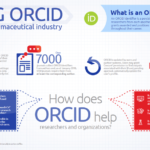This Open Access Week 2018 special edition of the Open Pharma digest features an interactive dashboard of open access data, the cost of open access publishing for research funders, and the latest on Plan S.
New dashboard allows the real-time exploration of open access trends via wizdom.ai
This dashboard, which is based on Unpaywall and Directory of Open Access Journals (DOAJ) data, enables users to explore and interrogate the latest trends and patterns emerging in the world of open access. The tools cover a range of comprehensive topics, including open access rates per region and institution, open access in relation to citations, and the changing proportion of papers published open access over time. Fiji emerged as the nation with the highest proportion of published papers released open access, followed by Brazil and Indonesia. Established research nations had a lot of catching up to do with emerging research nations, with Sweden, the UK, Germany and the USA coming in 55th, 59th, 79th and 81st place, respectively. The data also suggest that open access research papers are closing the gap on paywalled papers with regard to their relative citation ratios.
Smits on Plan S: society journals should join the transition to open access via Times Higher Education
Open Access Week 2018 has been filled with a lot of talk on the latest big news in open access: Plan S. This controversial open access policy, which has been launched by a group of 13 European national funding bodies and the European Research Council, sets out a radical plan for achieving full open access by 1 January 2020. This article looks at Smits’ mission to recruit new signatories to his plan, and at the mixed responses that he has received from the groups he has been speaking with. Amongst the most staunch opponents of the plan are society journals, which tend to rely heavily on subscription fees, and have warned that Plan S could be the end of many smaller society publishers who rely on subscription charges. Smits outlined his goal to involve all publishers in the discussions surrounding the implementation of the plan, and for society publishers to “join the transition and be part of it – don’t try to slow it down”.
The future of medical publishing: open access, identifiers and preprints via NetworkPharma.tv
As part of a four-part series of webcasts on Open Pharma and the future of medical publishing (which also featured Open Pharma, preprints and identifiers), this video shows Open Pharma’s Amy Williams presenting on Plan S. The talk looks at who is subscribed to Plan S, the open access principles that funders and publishers must meet, and what the ramifications of this plan could be for the publishing of industry-sponsored research.
How much does open access cost institutions? via Unlocking Research
Open access publishing can be a costly business for funders, with a typical article processing charge (APC) reaching thousands of pounds per article published. This research explores the cost of open access by tracking the £10 million awarded to Cambridge University by Research Councils UK (RCUK) and the Charity Open Access Fund (COAF) to support the university’s transition to full open access. The data suggest that APCs have increased by an average of 7% per year since 2014 and give insight into where the money is being spent, with 80% of the spend having gone to hybrid journals. This information is of importance to both funders and publishers: as of 1 January 2020, this research will be subject to the Plan S ban on hybrid journals. The report concludes with a warning that, although current funding support for open access has been sufficient, the growth of costs means that, as the transition to open access takes place, funders will create an increasing burden.






